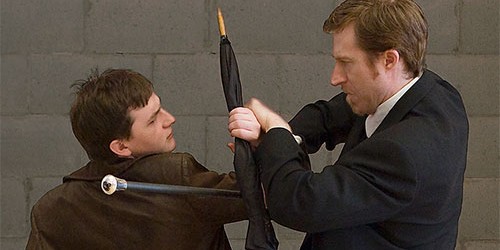- Originally published on the Bartitsu.org site on Wednesday, 9th January 2013
An excerpt from The hooligan nights : being the life and opinions of a young and unrepentant criminal by Clarence Rook (1901):

The average Hooligan is not an ignorant, hulking ruffian, beetle-browed and bulletheaded. He is a product of the Board School, writes a fair hand, and is quick at arithmetic. His type of face approaches nearer the rat than the bulldog; he is nervous, highly strung, almost neurotic.
He is by no means a drunkard; but a very small quantity of liquor causes him to run amuck, when he is not pleasant to meet. Undersized as a rule, he is sinewy, swift, and untiring. For pocket-picking and burglary the feather-weight is at an advantage. He has usually done a bit of fighting with the gloves, for in Lambeth boxing is one of the most popular forms of sport. But he is better with the raws, and is very bad to tackle in a street row, where there are no rules to observe. Then he will show you some tricks that will astonish you.
No scruples of conscience will make him hesitate to butt you in the stomach with his head, and pitch you backwards by catching you round the calves with his arm. His skill, born of constant practice, in scrapping and hurricane fighting brings him an occasional job in the bashing line. You have an enemy, we will say, whom you wish to mark, but, for one reason and another, you do not wish to appear in the matter. Young Alf will take on the job. Indicate to him your enemy; hand him five shillings (he will ask a sovereign, but will take five shillings), and he will make all the necessary arrangements. One night your enemy will find himself lying dazed on the pavement in a quiet corner, with a confused remembrance of a trip and a crash, and a mad whirl of fists and boots. You need have small fear that the job will be bungled. But it is a matter of complaint among the boys of the Walk, that if they do a bit of bashing for a toff and get caught, the toff seldom has the magnanimity to give them a lift when they come out of gaol.
The Hooligan is by no means deficient in courage. He is always ready to fight, though he does not fight fair.










